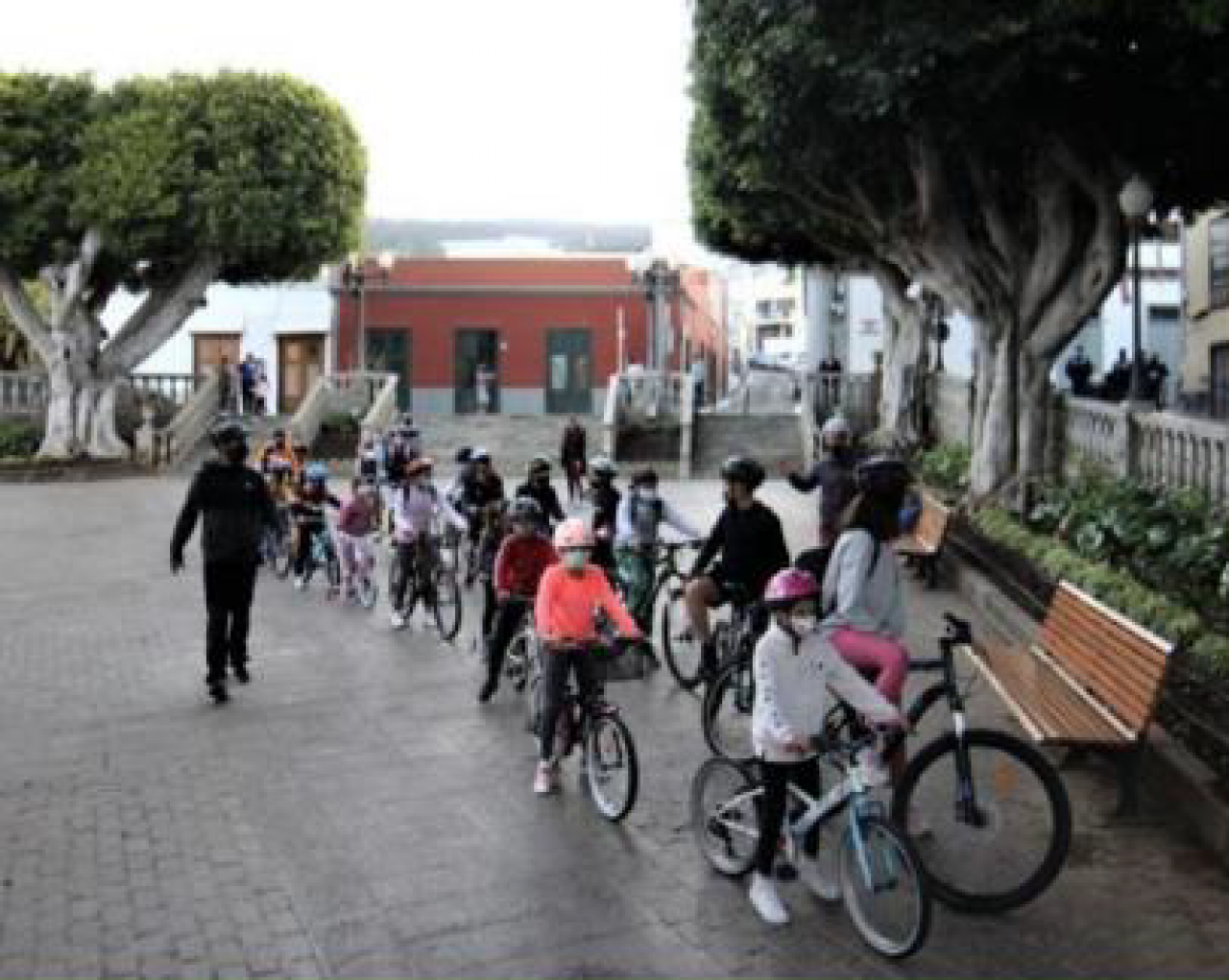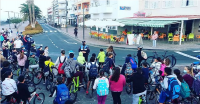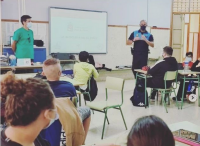
The municipality of Guía de Isora emphasised the improvement of mobility options for children over the last two years. As by its pilot on changing the traffic scheme of an access road to both, a school and the centre of the Guía des Isora nucleus. Improving traffic organisation and infrastructure was the key of this one. Now, Guía de Isora acted on the behaviour side of the story.
The team of Guía de Isora and the local police went to all 7 schools in the Guía de Isora nucleus and provided pupils of the 6th grade, 11 – 12 years old, with a class on “Sustainable, healthy and safe mobility”. The main aim of the class was to support pupils in their traffic skills and independent moving around in the municipality.
Classes were structured in 3 elements:
- A theory part that dealt with doubts and concerns of pupils to road safety conditions. The team discussed where to walk or ride, how to handle the vehicle of choice in this and how to deal with items to carry along.
- A first practical part in a protected environment taught pupils how to master different manoeuvres once using public roads such as starting and braking, keeping a safe distance to other vehicles, turning right or left and riding through narrow road space sections.
- A second practical part took pupils out of the traffic circuit to real traffic conditions in the roads around the schools to apply the lessons of the first part to reality. This step was done for some schools only where traffic conditions on road were suitable to on-road-training.


The team produced a video on the classes and published it to the municipal Facebook account: https://www.facebook.com/aytoguiadeisora/videos/2082935601885237/
For these actions, local actors were involved who are key to the promotion and success of this type of initiative. These are, for example, the company Grupo MUSE, or the associations Cronotropo Vial and Mejor en Bici, in which specialised technicians and volunteers from the public safety services participate.
The classes got evaluated by a survey to the 7 schools. All 3 elements met good satisfaction levels higher than 4 out of 5. Schools rated the classes’ compliance against their objective with 4 out of 5 as well. Popularity of the classes amongst pupils was even higher with most entries indicating 5 out of 5. The classes triggered plans at the schools’ side to take up education on traffic behaviour in their lessons. Comments to this were to provide more space for bicycles and scooters to pupils, to incorporate mobility behaviour in sustainability subjects or to prepare an entire term focusing on mobility. Suggestions for a repetition that all schools want to see are to extend the classes to other grades, possible all following a cascade of classes covering one entire week for one school. The schools suggested improvements to the immediate school environment covering better signposting, new cycling lanes, more green areas, better conditions to walk to school as well as the presence of mobility officers on the road.
Now, the team of Guía de Isora is focusing on the completion of its Integrated Action Plan and we are looking forward to provide news and details on this in the coming weeks!

